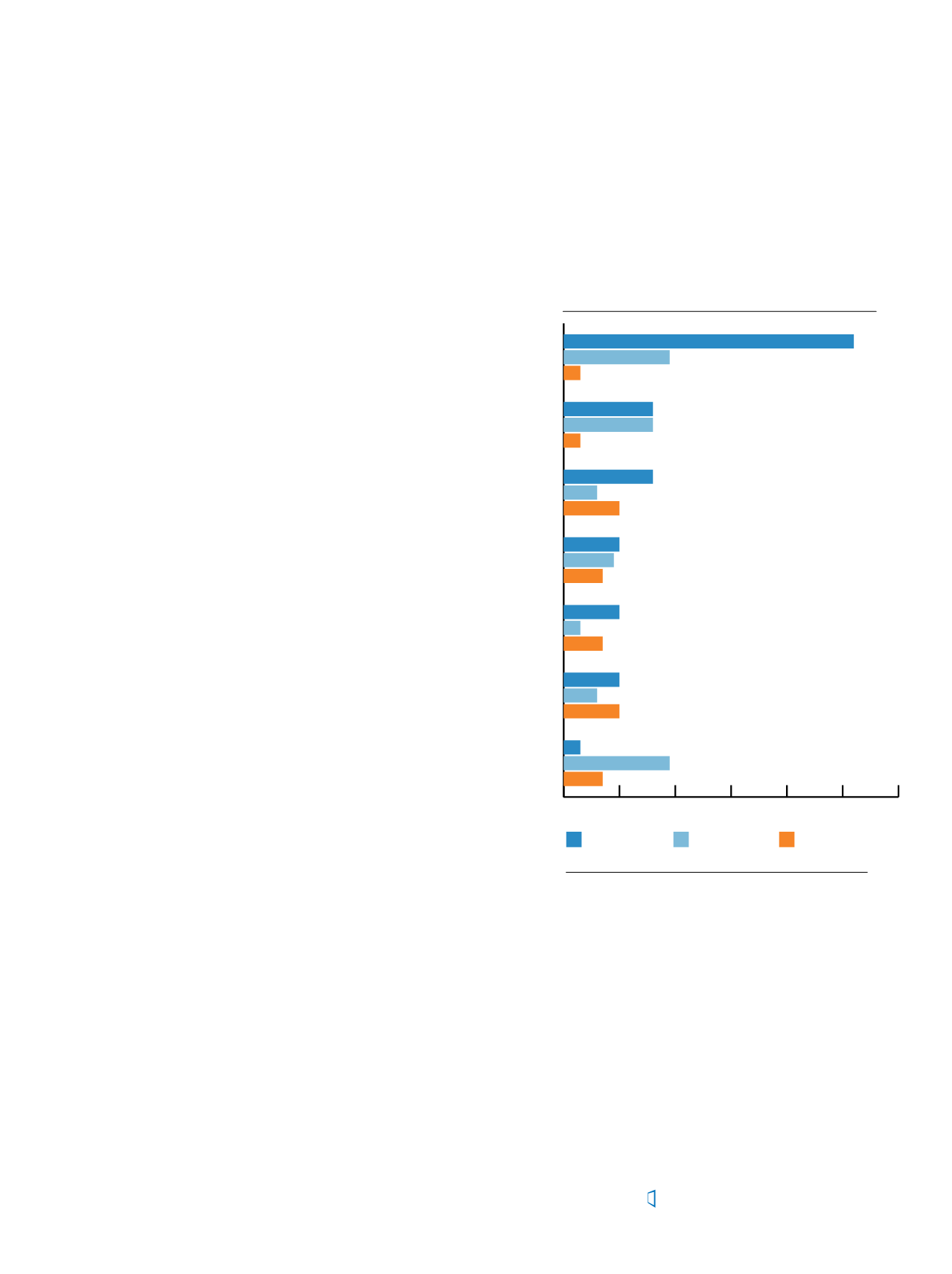

create problems, such as expensive per-minute rates and
a lack of routing functionality for calls between locations.
Other buyers work at organizations that are opening new
locations, and want to replace existing systems with a new
one that will be deployed uniformly across the company.
VoIP is helping buyers reduce their overall number of lines.
It allows businesses to provision lines more flexibly, because ser-
vices are priced according to the average number of employees
simultaneously on the phone, as opposed to the total number
of employees. Small businesses with 20 to 49 employees are
making particularly good use of this cost-saving characteristic of
VoIP technology, suggest the findings from Software Advice.
To satisfy this varied slate of requirements, cloud system
adoption is becoming more widespread.
“The adoption rate for cloud systems among small busi-
nesses is nearly even with those for on-premises IP PBX
systems and legacy PBX systems,” Software Advice said in
the report. “Many buyers move to the cloud to save money
and avoid the hassle of updating and maintaining their phone
systems themselves, though some buyers prefer to manage
their own systems and opt for on-premises solutions.”
Purchase Drivers
for Small Businesses
Communications needs are one thing, but when it comes
to actually pulling the trigger to purchase technology, the
evolution of VoIP sales has been driven by the organizational
needs of the customer. This trend is most obvious in the
market for UC software.
There are thousands of small business organizations
now looking for the right voice and unified communica-
tions service. In a look at the top purchase drivers shaping
the market, budget, call-quality and uptime issues turn out
to be relatively insignificant, said Software Advice. That
suggests that most buyers looking for VoIP systems al-
ready receive reliable service with satisfactory audio qual-
ity at a decent price.
Instead, the highest percentages of buyers seek new
phone systems because they need a more scalable solution
to accommodate growth (15 percent), or need to replace an
aging system (14 percent).
The vast majority of buyers seeking to replace aging
systems are using legacy PBX systems with PRI (52 percent)
and/or POTS service (36 percent). Almost one-fifth (19
percent) of the buyers in the Software Advice sample report
difficulties with aging on-premises IP PBX systems.
First-generation IP PBX systems from the early 2000s
generally don’t have the dramatic problems that plague aging
legacy PBXs from the late ’80s and ’90s (which lack support,
qualified technicians, replacement parts, etc.). That said,
some buyers still complain that their older on-premises IP
PBX systems don’t offer the functionality of newer ones, and
that they’re more challenging to use.
For instance, one buyer with an on-premises IP PBX
purchased in 2005 complains, “We have an auto-attendant,
but it’s difficult to use. We have remote checking of voice-
mail, too, but it’s difficult to use and program.”
Many businesses also have the need for a centralized
phone-system setup (cited by 7 percent). Some of these buy-
ers work at organizations with multiple locations that each
have their own PBX system. These multi-vendor setups can
create problems, such as expensive per-minute rates and lack
of routing functionality for calls between locations. Other
buyers work at organizations that are opening new locations
and want to replace existing systems with a new one that will
be deployed uniformly across the company.
Also, businesses relying on cellular service run into dif-
ficulties scaling their systems more frequently than other
groups in the sample. This is likely because only 1 percent
use a “virtual number system,” which adds a business line to
users’ personal mobile devices. Businesses relying on cellular
service don’t have a unified phone system, but rather, work
using just a collection of employees’ personal devices. This is
a ripe opportunity for UC.
According to the FCC, 15 percent of all American
businesses have now adopted VoIP and UC. And the Soft-
ware Advice findings indicate that many small businesses
are eager to jump on the bandwagon. Understanding what
motivates buying behavior can be invaluable to capitaliz-
ing on the opportunity.
By Current Phone System Type:
Top Reasons for Evaluating New VoIP
Source: Software Advice
Consumers Expect Multichannel Choices
Consumers who think these channels are important f
0% 10% 20% 30% 40% 50% 60%
Aging system
Lack of call
routing
functionality
Lack of PBX
applications
Difficult to use
Malfunctioning
system
Lack of
scalability
Too expensive
52%
19%
3%
16%
16%
3%
16%
6%
10%
10%
9%
7%
10%
3%
7%
10%
6%
10%
3%
19%
7%
Legacy PBX
On-premises
IP PBX
Cloud PBX
0%
20%
40%
60%
80%
100%
Online
self-service
order
tracking
0800
to
advisors
Online
chat
SMS
/Text
93%93% 88% 87%
70%
81%
61%
67%
53%
46%
Great
38
Channel
Vision
|
May - June 2015
















